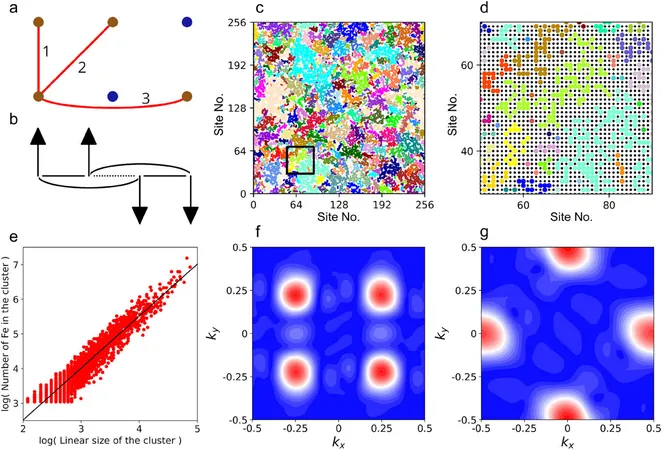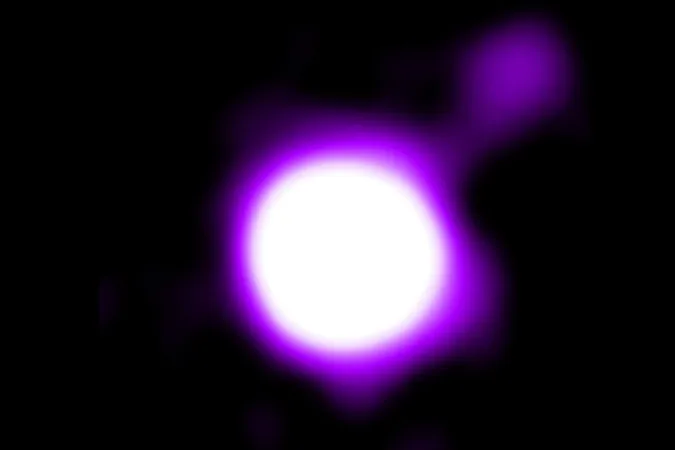
Unveiling the Marvels of Murunskite: A Superconductor's Hidden Order
2025-05-14
Author: Li
In a groundbreaking discovery, researchers from TU Wien, along with teams from Croatia, France, Poland, Singapore, Switzerland, and the US, have stumbled upon an astonishing effect in a material known as murunskite. Despite its chaotic atomic arrangement, this unique substance exhibits impressive magnetic order, challenging conventional wisdom in superconductivity.
Published in the journal *Advanced Functional Materials*, this research sheds light on the enigmatic world of superconductors—materials that conduct electricity with zero resistance under specific conditions. The quest to create superconductors that operate at higher temperatures remains a significant hurdle in modern materials science.
The Tu Wien team uncovered an unexpected connection between two distinct families of superconductors—"cuprates" and "pnictides"—by examining murunskite's intriguing properties. Miraculously, even with its atoms organized in a random, disorderly fashion, murunskite maintains ordered magnetic characteristics at surprisingly high temperatures, mimicking the behavior of iron-pnictides.
This remarkable similarity extends to cuprates as well, where a unique form of metallicity appears despite significant local disorder, ushering in high-temperature superconductivity. The critical components in both cuprates and murunskite are open ligand orbitals that allow electrons to flow freely.
A Journey Through Superconductivity's Complex Web
High-temperature superconductors are typically defined by the intricate quantum interactions among various atoms. Understanding these materials theoretically and simulating their complex behaviors challenges scientists worldwide.
In the search for new superconducting materials, classes such as cuprates—ceramics containing copper that transition from insulating to superconducting upon doping—have shown great promise. In contrast, pnictides are metallic and feature mobile electrons, presenting an entirely different class of superconductivity.
Murunskite, although itself not a superconductor, bridges these two worlds. "It's like the missing link between these two families," says Prof. Neven Barišić from the Institute of Solid State Physics at TU Wien. "While it shares a crystal structure with pnictides, its electronic properties are reminiscent of cuprates. Its unique magnetic features are both novel and surprising."
Chaos Meets Order: The Mystery of Murunskite
Typically, materials exhibit magnetic effects only when their atoms are arranged in a consistent geometric pattern, aligning like numerous tiny compass needles. This uniformity is essential for achieving long-range magnetic order.
However, murunskite defies these norms. According to researcher Priyanka Reddy, "This material's atomic structure is anything but regular. In its crystal lattice, copper and iron atoms coexist without a fixed pattern—copper atoms are non-magnetic, while iron atoms are the source of magnetism."
The arrangement is haphazard, yet astonishingly, magnetic order forms at around -176 degrees Celsius (97 K). The iron atoms align themselves into distinct patterns, even when they are situated at varying distances.
As Davor Tolj explains, "We're witnessing the emergence of order. Despite the absence of geometric rules, magnetic clusters form—these are like islands of order within a tumultuous sea of disarray—coalescing to create a unifying magnetic direction throughout the crystal structure."


 Brasil (PT)
Brasil (PT)
 Canada (EN)
Canada (EN)
 Chile (ES)
Chile (ES)
 Česko (CS)
Česko (CS)
 대한민국 (KO)
대한민국 (KO)
 España (ES)
España (ES)
 France (FR)
France (FR)
 Hong Kong (EN)
Hong Kong (EN)
 Italia (IT)
Italia (IT)
 日本 (JA)
日本 (JA)
 Magyarország (HU)
Magyarország (HU)
 Norge (NO)
Norge (NO)
 Polska (PL)
Polska (PL)
 Schweiz (DE)
Schweiz (DE)
 Singapore (EN)
Singapore (EN)
 Sverige (SV)
Sverige (SV)
 Suomi (FI)
Suomi (FI)
 Türkiye (TR)
Türkiye (TR)
 الإمارات العربية المتحدة (AR)
الإمارات العربية المتحدة (AR)